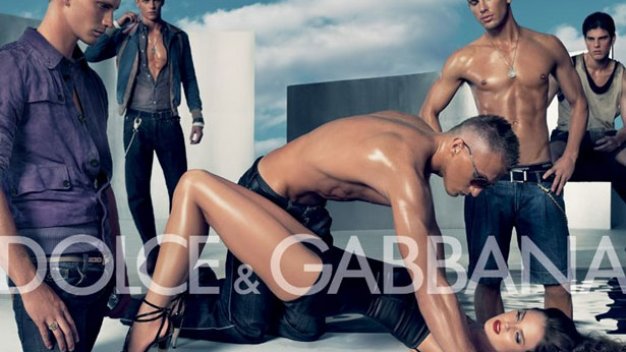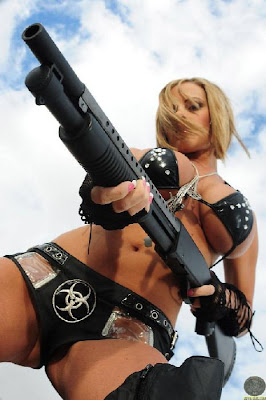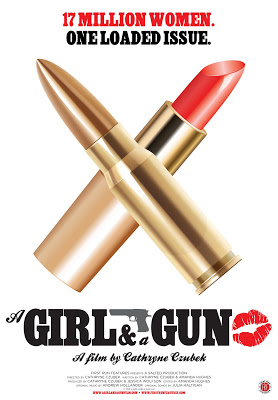 |
| A Girl and A Gun movie poster |
Trigger Warning
Cathryne Czubek’s
A Girl and A Gun is a powerful documentary that broadly surveys the incendiary topic of women and firearms in America. The film shows us the many sides of women and gun ownership, including safety and self-protection, competitive sport, family and culture, anti-violence and gun control activism, and women who are the victims of gun violence as well as those suffering the consequences of having used a gun to kill another person. Not only that, but Czubek gives us an overview of women and guns throughout American history, including the commercialization and sexualization of the issue. Most importantly, though, this documentary tells the very real and very human stories of women.
First we’ve got writer and blogger Violet Blue who feels guns are empowering and sexy. Violet finds that being open about her status as a capable gun owner (a traditionally-coded masculine tool) shifts threatening online conversations to a more level field. This makes me wonder how many productive dialogues could be had on and off-line if so many women weren’t silenced by intimidation and bullying tactics due to a perceived helplessness that is exploited in order to win an argument (and reinforce patriarchal hegemony, of course).
 |
| “You move through the world as a target when you are female.” – Blue Violet |
Robin Natanel is a tai-chi instructor whose house was broken into by an unstable ex-boyfriend. We also meet Sarah McKinley, a widow and mother of an infant, who shot and killed a home invader. Though she abhors violence, Robin purchased a gun because she realized she was the only one who could keep her safe. Both of these women find that the police and the law could not protect them during an attack, even in her their own homes, supposedly the safest and most private of spaces.
 |
| “People ask me how I came to own a handgun. I tell them because I have felt the fear.” – Robin Natanel |
On the other side of the issue is Stephanie Alexander, a victims’ rights activist, whose daughter, Aieshia Johnson was injured as an innocent bystander in a shooting. Aieshia is paraplegic as a result of the shooting, and the mother and daughter differ on their feelings towards guns. Stephanie sees firearms and violence as the cause of her daughter’s life and mobility being irrevocably altered. Aieshia, feels particularly vulnerable as a woman in a wheelchair and the survivor of a violent crime, so she carries a gun. We also meet Karen Copeland, an inmate, who is serving time because she killed her girlfriend. Karen weeps as she describes the terrible act that she believes would have been prevented had she not owned a gun. The consequences of guns along with their power to destroy are palpable in these three interviews.
A Girl and A Gun also underscores the gun industry as well as Hollywood’s propensity for the commercialization, exploitation, and sexualization of women with guns. The gun companies goad and exploit women’s fears.
 |
| Scotsdale Gun Club ad playing upon and, perhaps, exacerbating the female fear of attack in the public sphere. |
These companies discovered in women an untapped market, so they whip up the fear frenzy while producing pink guns and designer concealed-carry handbags.
As a woman, this fear of the violation of your person is not unfounded, nor are the gun companies the only ones playing upon it. In fact, it’s hard not to see mainstream media as perpetuating that cycle of violence by dehumanizing and objectifying women at every turn.
 |
| I find this ad (for gang-rape) offensive, and it certainly triggers me. |
However, Hollywood would have us believe that the now prevalent imagery of women with guns is empowering to women. Sometimes, of course, it may be. Strong female characters who step into the masculine-tagged realm of guns, violence, and action can be fun and inspiring (think Linda Hamilton as Sarah Connor or Sigourney Weaver as Ellen Ripley). More often than not, though, these images are empty, showing us woman as sex and gun as dick.
 |
| Don’t tell me that’s not a phallus. |
Though she focuses most on the women who own guns, Czubek doesn’t tell us what we should believe, nor does she give us an answer. Instead, she unfolds the complicated and very individual motivations of women with regards to their choices and firearms. Czubek shows us, too, that we have a history and culture that are at play in all of our decisions and rationalizations. In the end, Czubek allows women to tell their own stories, the stories of the ways in which they navigate a world fraught with impossible rules, threats, and expectations.






